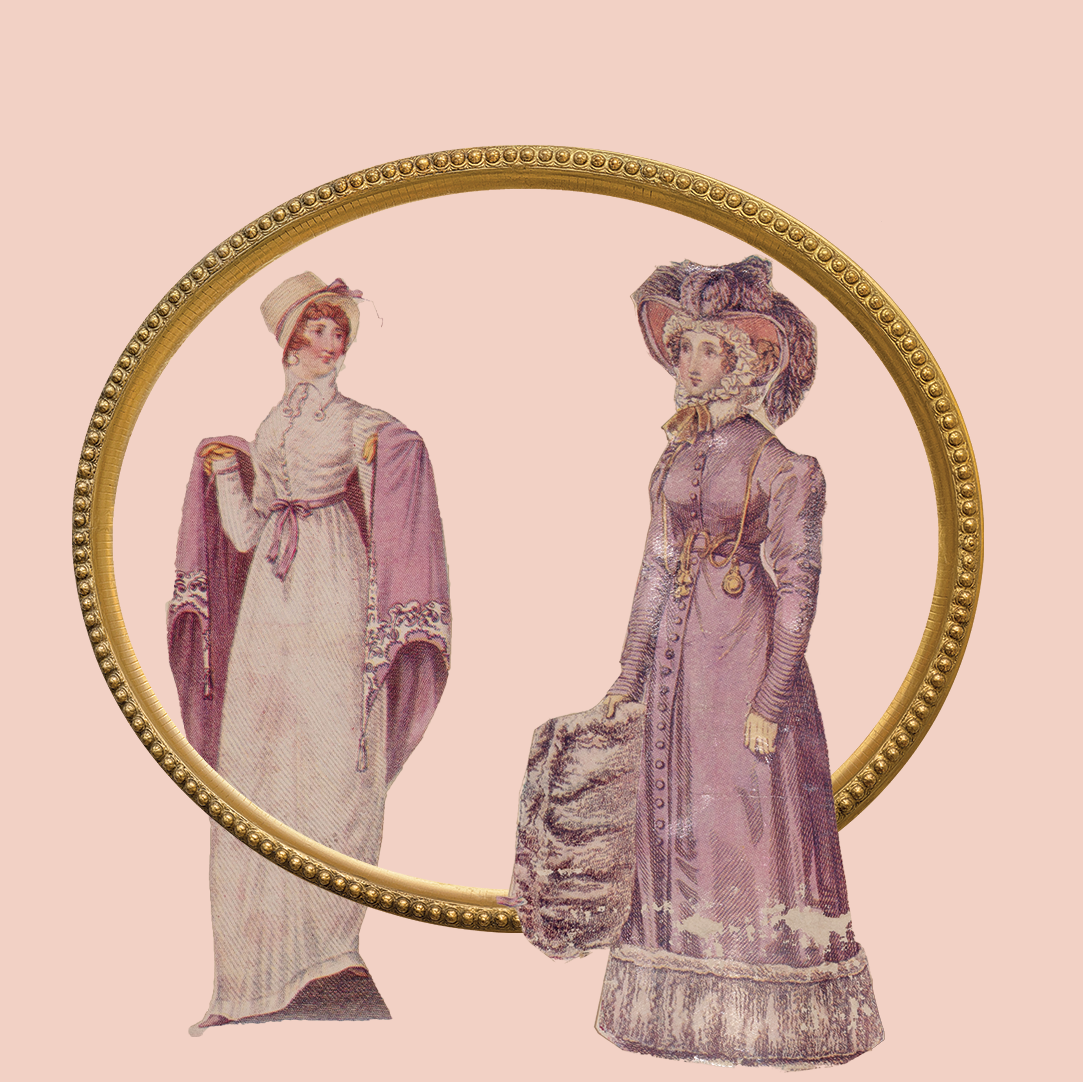The Regency was an era when fashion mattered. Much had changed since the colourful glamour of the previous century when a wealthy woman wore enormous skirts, laced bodices and elaborate wigs, and a rich man could appear in a suit made of cloth-of-gold, ruffled shirts, and shoes with diamond-encrusted heels. By the early nineteenth century clothes had become simpler, easier and more convenient.
Between 1811 and 1820, women’s fashion took inspiration from the classical costumes of ancient Greece and Rome. The Regency would prove to be a more comfortable time for women than both the previous era and the Victorian era which was to come. Regency gowns did not require the bone-crushing corsets that would become so popular only a decade after the Regent’s (then George IV) death. Although corsets were worn during the Regency, they were longer and far less constricting than later models. This was because the now-iconic Regency dress had a high empire waistline which sat just below the bust allowing the skirt to fall freely to the ankle. Not only was this a far more relaxed style, it was also far more comfortable and suited women of all shapes and sizes.
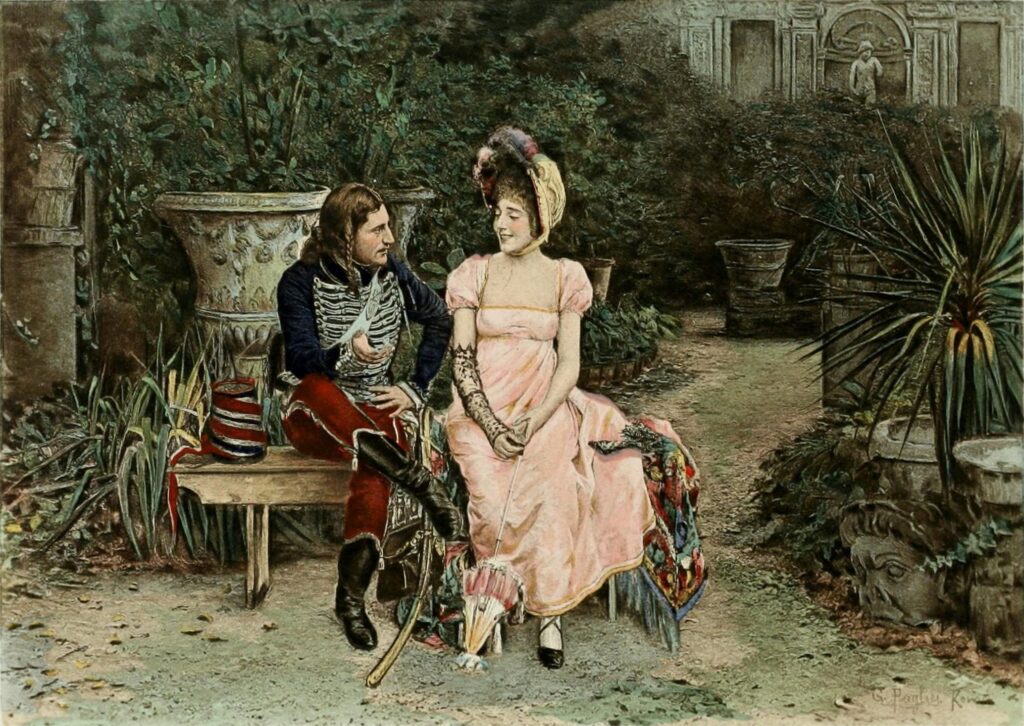
Generally made of muslin, cambric or cotton, dresses were light and had a scooped or low neckline which would sometimes be worn with a lace fichu (a scarf or small cape). Sleeves could be long or short and were often puffed at the shoulder.
While suitable for summer wear, Regency gowns were not well-designed for the cooler months and ladies wore short jackets known as ‘spencers’, coats called ‘pelisses’ or shawls – Kashmir, Paisley or Norwich silk being the most desirable – to keep warm. Dresses were often white but pastel shades such as primrose yellow, rose pink, and cerulean blue were also popular.
No ensemble was considered complete without a hat which were often chosen to match a particular dress. Straw hats, poke bonnets, villager hats, hats of velvet and silk and decorated with artificial flowers or fruit were popular. And with a riding-habit, the most daring ladies could wear a military-style shako hat inspired by those worn by the officers fighting in the Napoleonic Wars.
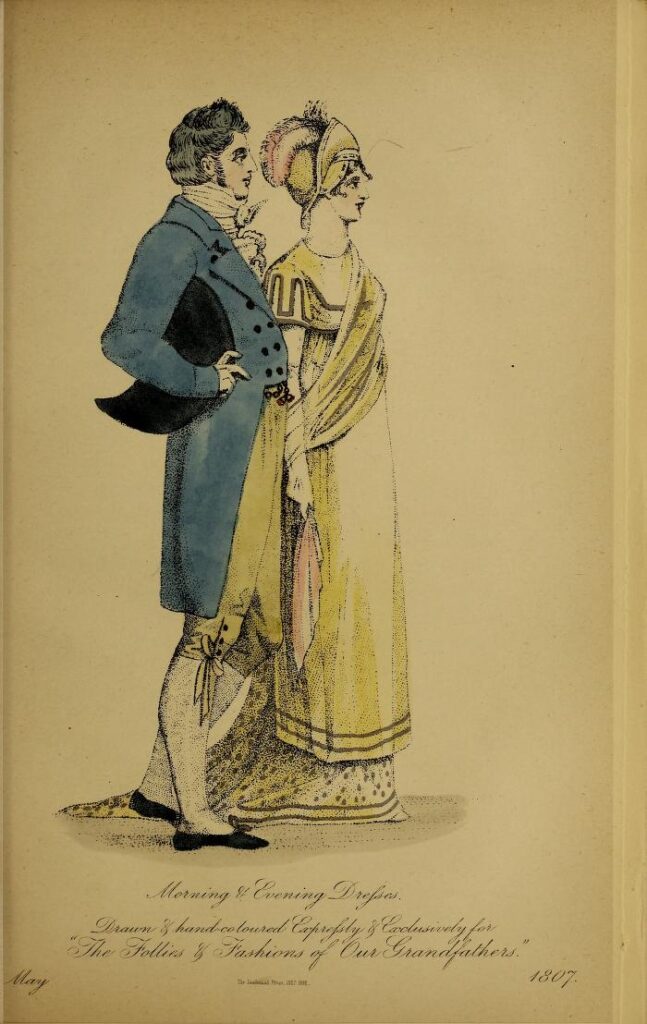
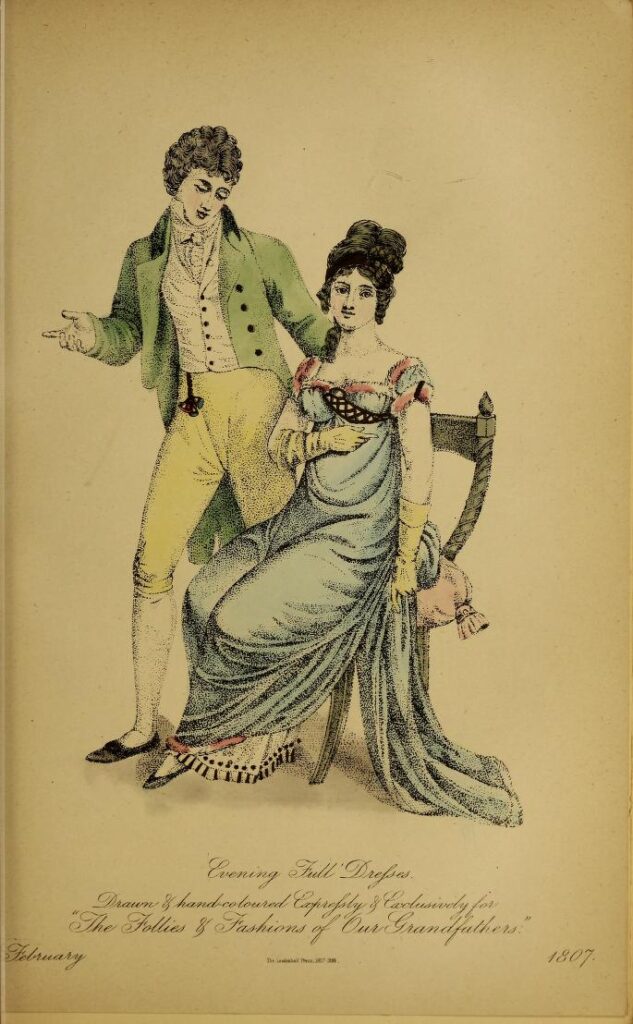
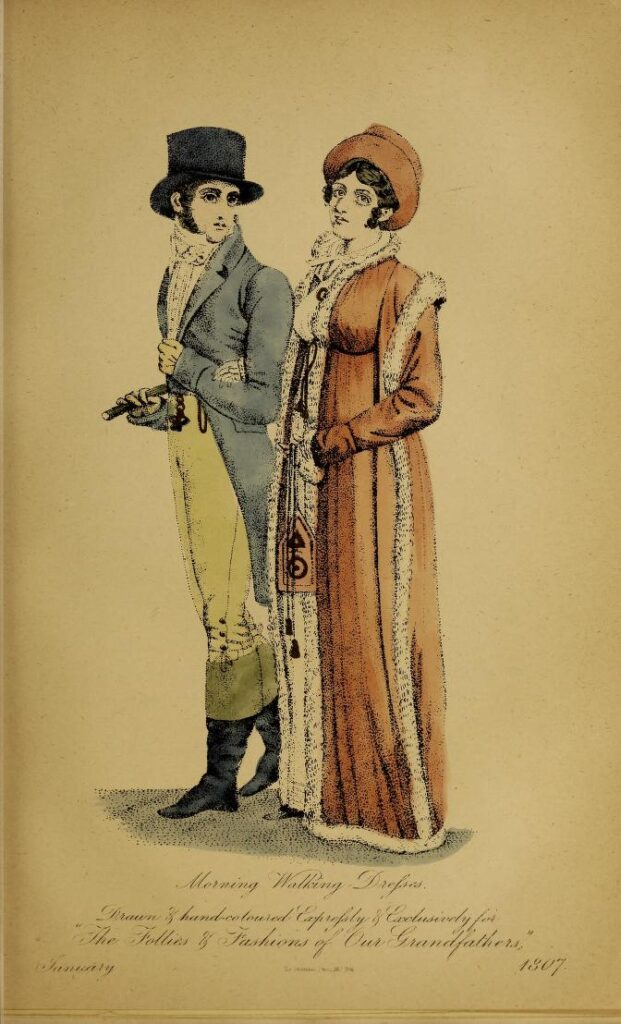
Jennifer Kloester, November 2023

